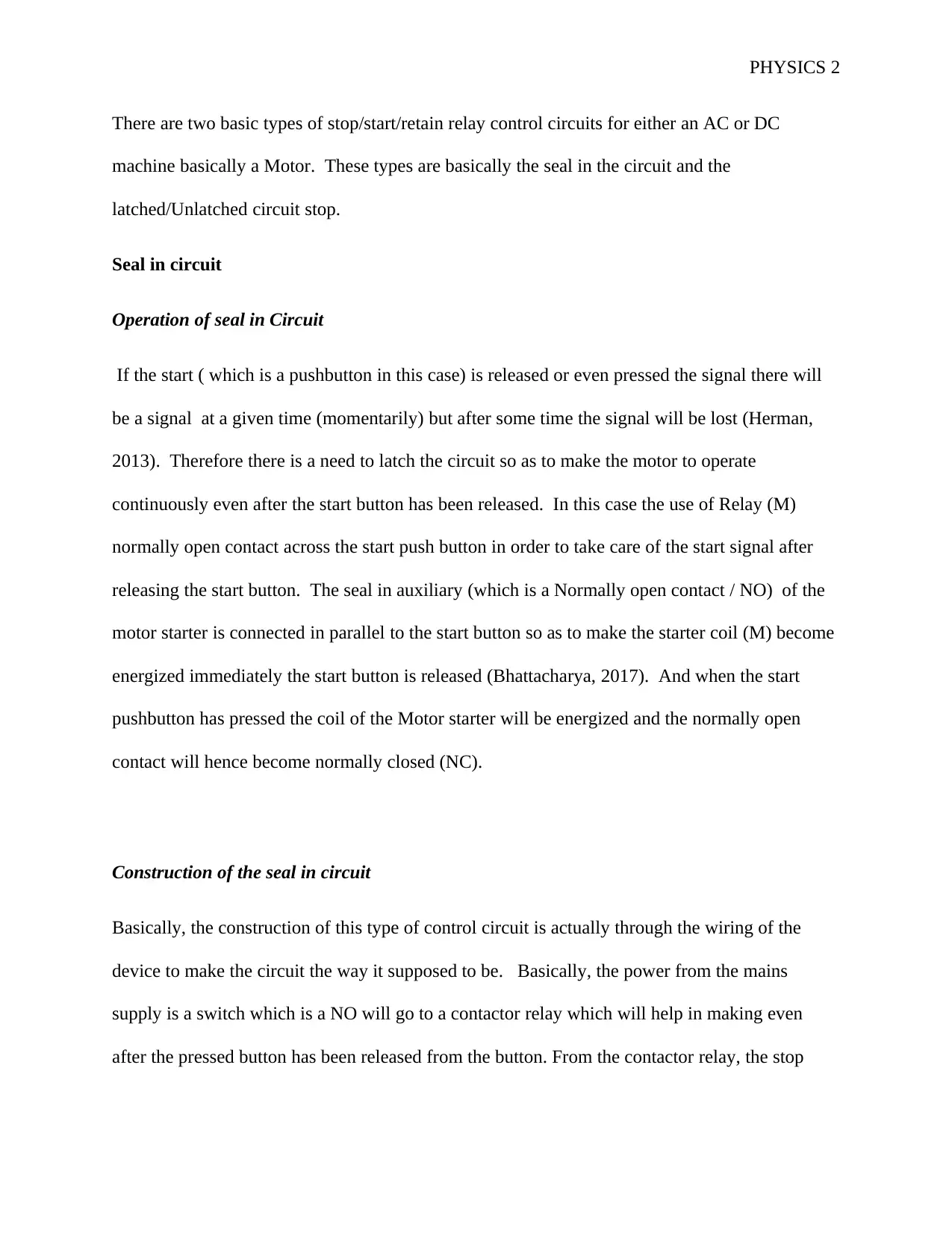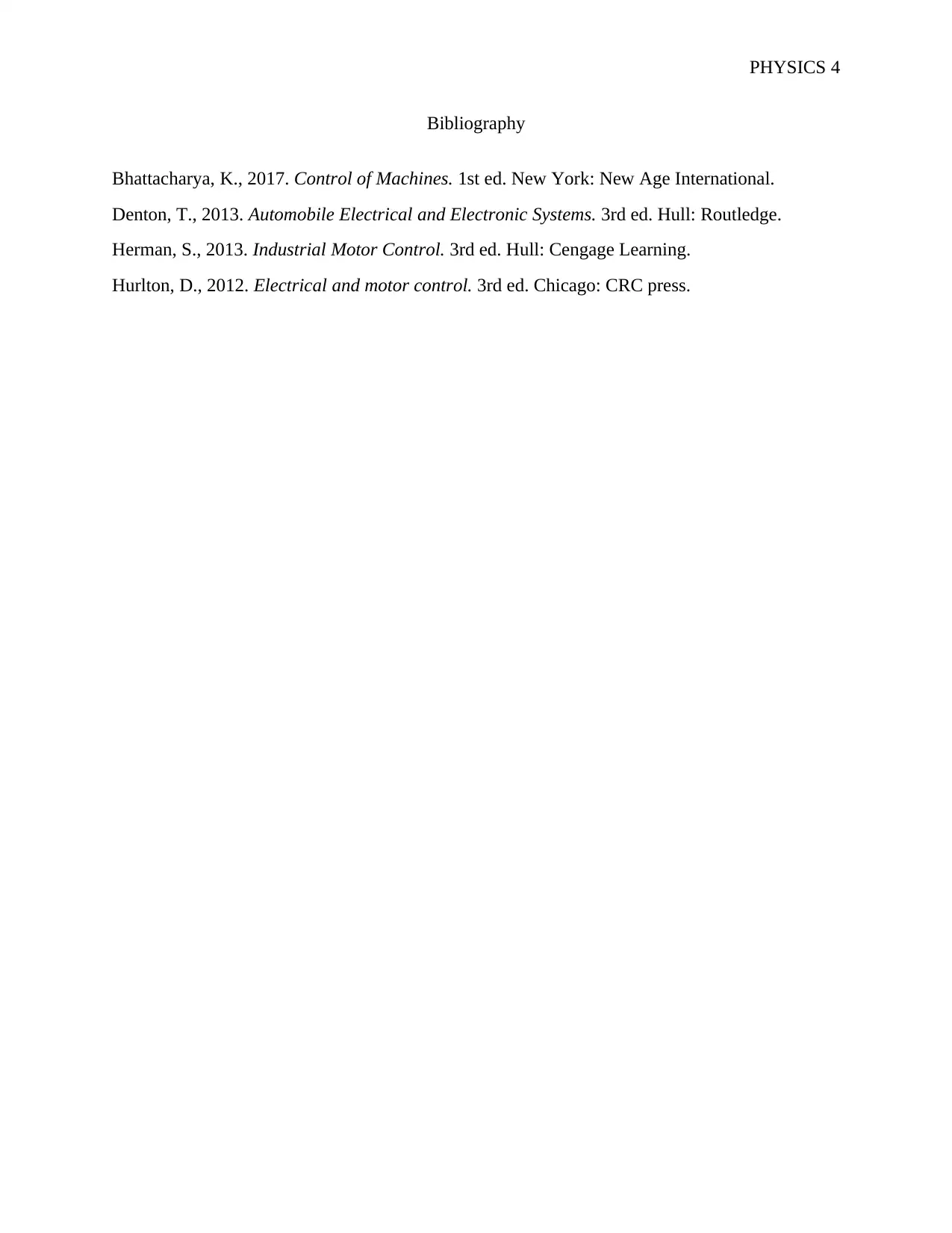Analysis of Motor Control Circuits: Seal-in and Latched/Unlatched
VerifiedAdded on 2022/11/25
|4
|644
|85
Homework Assignment
AI Summary
This assignment delves into the analysis of motor control circuits, focusing on two primary types: seal-in circuits and latched/unlatched circuits. The assignment begins by explaining the operational principles of a seal-in circuit, detailing how it maintains a continuous motor operation even after the start button is released, emphasizing the use of normally open contacts to achieve this functionality. The construction of a seal-in circuit is then described, highlighting the wiring configurations, including the use of a contactor relay and stop button, often illustrated through a ladder diagram. Subsequently, the assignment transitions to latched/unlatched circuits, explaining how the magnetic field generated by electrical currents controls the switching action of the circuit, and how a magnetic strip is used in between the coils. The construction of a latched/unlatched circuit is also discussed, emphasizing the wiring of normally open and normally closed contacts in series and parallel, again typically illustrated with a ladder diagram. The assignment concludes with a bibliography of relevant resources.
1 out of 4






![[object Object]](/_next/static/media/star-bottom.7253800d.svg)